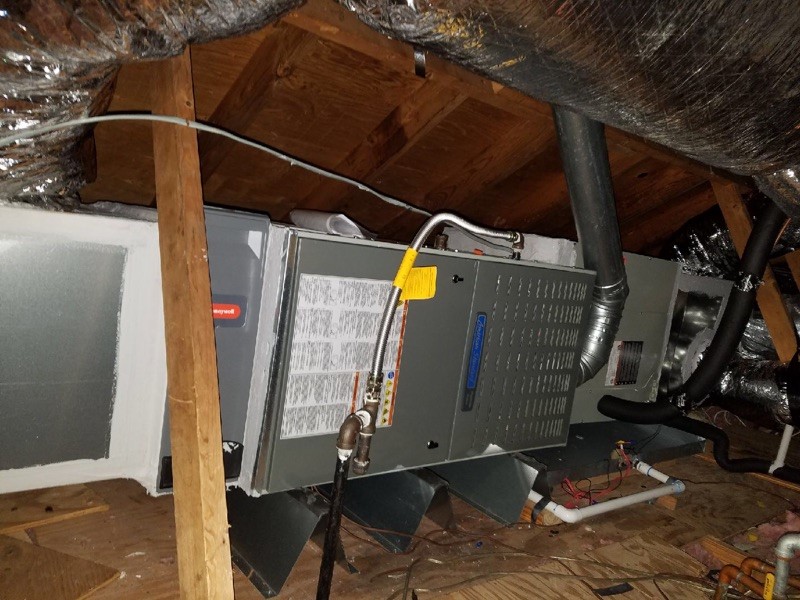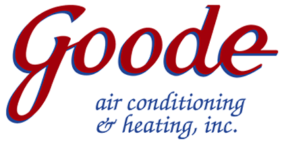We have customers that think that they only use their furnace about two weeks out of the year. They are shocked to learn that it is probably the hardest working appliance in their home. Most people think that the only job your furnace does is to heat your home. Your furnace is responsible for pushing the air throughout your home. Any time you tell your thermostat you want your home cooler, the signal is first sent to the furnace and then to the air conditioner. The furnace will turn on the blower and then tells the condenser to turn on. With this in mind, your furnace is actually the hardest working part of your air conditioner, even in the heat of summer.

What is the right size furnace for your home?
Furnaces sizes are based upon two elements; the heat capacity and the blower size.
- Manufactures must produce furnaces necessary to work in all parts of the United States. The problem that we face is that due to the mild winters in the Houston area, we do not require a lot of heat. This results with homes having furnaces that have over twice the capacity necessary to heat their home. Since most furnaces have twice the capacity necessary, this can result in the furnace producing too much heat for your duct system. When sizing your furnace, we are looking at primarily the blower capacity and then trying to select the furnace with the lowest heating capacity available.
- As stated earlier, we look at the furnace to push the air throughout your home. When sizing your furnace, we have to ensure that the blower has enough power to push a certain volume of air based upon your condenser outside and the evaporator coil inside. If the blower is too small, the evaporator coil can freeze up. If the blower is too large, your air conditioner will not be able to remove the humidity within your home.
How to define an efficient furnace
A furnace’s efficiency is broken down into two categories; the heat exchanger and the blower.
- There are two major types of heat exchangers that manufacturers produce; condensing furnaces and non-condensing furnaces. Non-condensing furnaces typically have an efficiency of approximately 80%. This means that the furnace will convert only 80% of the energy in the natural gas into heat that will be sent into your home. Condensing furnaces typically have an efficiency of between 90% to 98%. This means that the furnace will convert over 90% of the energy in the natural gas into heat that will be sent into your home. The initial cost for this type of furnace versus the operating cost (due to our mild winters) make this type of furnace not economically viable. Very few homes in the Houston area incorporate condensing furnaces. For this reason, we often recommend the non-condensing, 80% efficiency furnaces.
- The blower efficiency in your furnace will have a drastic effect on the overall efficiency of your air conditioning system. As of July 2019, the Department of Energy has required manufacturers to supply more energy efficient blower motors within the furnace (79 FR 38129). To achieve these new energy efficiency standards, manufactures supply furnaces with electronically commutated motors (ECM) versus permanent split capacitor (PSC) motors. The ECM motors represent an approximate 50% reduction in energy consumption versus the PSC motors. Unlike PSC motors, ECM motors can be programed to vary the volume of air depending upon the amount of air conditioning that is being called for.
QUOTE FOR YOUR FURNACE
The best customer is the most informed customer.
While your existing furnace might be matched with your existing air conditioner, we feel that it is appropriate to replace your furnace when you are looking at a new air conditioner. With replacing your air conditioner, we can ensure that you will have the most efficient system possible. While most companies will only present you with three options, we believe that you should chose the most appropriate system for your home. Our proposal includes up to 5 different options from both American Standard and Daikin. Our proposal details all the model numbers of the equipment as well as the efficiency and capacity of each match up, so there is no confusion as to what you are purchasing.
While most companies will charge extra for miscellaneous items, our proposals detail all these miscellaneous items we feel are necessary for the proper installation. Therefore, when we give you the proposal, the price that we present is the final price and there are no additional costs that will be associated with the installation of your system.
INSTALLATION OF YOUR FURNACE
The final process in the manufacturing of a furnace is the installation of that furnace. If it is not installed properly, the system will never perform as stated.
We at Goode Air Conditioning and Heating do not use subcontractors for the installation of your largest appliance within your home. Our installation crews are employees of Goode Air Conditioning, and we constantly train and monitor our employees to ensure that they use the best practices while installing your system.


